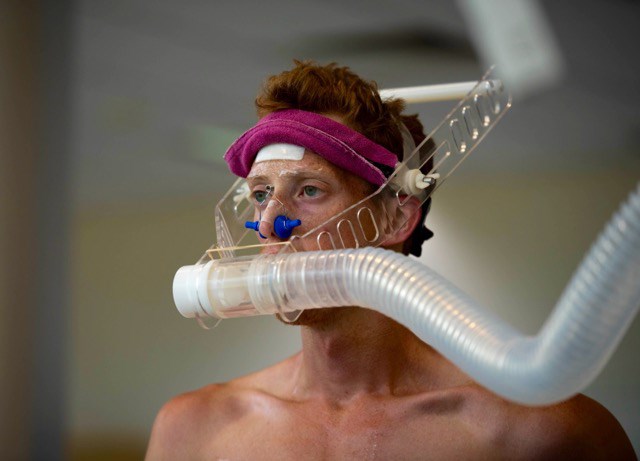Race day is finally here! As I gear up for my first 20km of the year down in Adelaide, I am very excited to see where my fitness is at.
Looking back over the last few months of training in Australia, I don’t think I’ve ever strung together such consistent training, despite a few hiccups here and there. This has gotten me feeling fit and confident heading into Sunday’s race.
When I last checked in, I had found a rhythm and was putting some good hard training weeks together.
That momentum carried through to our post-study testing period starting with a good VO2max test recording a value of 70ml/kg/min.
This value reflects the body’s ability to convert oxygen that you breathe in into energy for your muscles to use. A typical inactive person will have a value around 35, while a recreational athlete may be in the low 50s.
The test for us is performed by walking on a treadmill at 15km/hr with the incline steadily rising until exhaustion, all the while wearing a mask that analyzes the air you breathe out.
Having a high VO2max seems to be a pre-requisite for being an elite athlete.
However, it doesn’t do a great job differentiating between elite athletes, as there are so many other important variables at that level.
Suffice to say that 70ml/kg/min is enough to allow me to compete at a high level, but I know Olympic medalists who have lower and, conversely, slower athletes who have higher.
The value is also largely inherited, with training only able to move it so much, so I have my parents to thank for that in addition to their nurturing.
The next day was our 10km race. Being in such a heavy block of training, I was very satisfied with a third place finish, walking the 10km in 40:24.
While we had much more favorable weather than the pre-test 10km, this was still an improvement of nearly three minutes, so I knew the hard training was paying off.
The final day of testing was a 25km walk with a kilometre on the treadmill in the beginning, middle and end with the VO2 mask to measure our oxygen consumption (without having to do the WHOLE thing on the treadmill!). I covered the 25km in just over one houre and 52 minutes, or about 4:30 per kilometre.
This was a big, eight-minute improvement from the pre-test and further proof that I was trending in the right direction.
The last two weeks of training have seen a reduction in my training volume down to 120-130km/ week, but an increase in the intensity.
This is typical of how endurance athletes prepare for a race and is referred to as the taper.
This has helped me freshen up both physically and psychologically and ready to race on Sunday.
After the race, I will have a relaxing few days in Sydney to be a tourist, before heading back to Richmond for a couple of weeks.
After four months away, I’m greatly looking forward to some solitude getting my kilometers in around the dyke.



